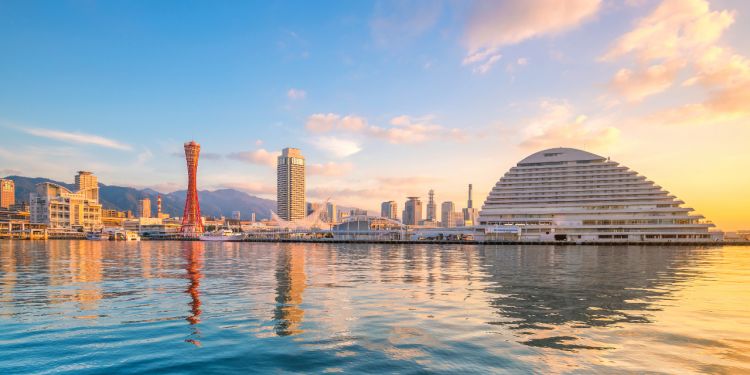
The Kyoto, Osaka, and Kobe metropolitan area is known worldwide as a tourist hotspot. It is known as "Keihanshin". It is also a dynamic and innovative student destination. How to go and study there? What are the requirements to obtain a student visa in Japan? Here is our practical guide to studying in Kyoto, Osaka, or Kobe.
Studying in Japan: the latest figures
Literature, law, economics, science, "senmon gakko" (specialized Japanese schools), and more – This is just a glimpse of what Japan has to offer to international students. More and more students are interested in its advanced training in animation, video games, manga, engineering, or robotics.
According to the Japan Student Services Organization (JASSO), 312,214 international students attended a Japanese institution in 2019. This figure has been impacted by COVID-19 and the Japanese government's tough stance. By 2021, the number of international students was down to 242,444. The country is one of the few that have kept their borders closed till early 2022.
Since March 1, 2022, the Kishida government, which came to power in 2021, has officially reopened the country to international students and workers. As of May 1, 2022, the number of international students was 231,146 [down 11,298 (4.7%) from the previous year].
There has been a decline in the number of students enrolled in regular courses at special training schools, universities, and junior colleges. This decrease is mainly due to fewer students enrolling in Japanese language education institutions in recent years, leading to an overall reduction in the total number of international students.
However, the easing of waterfront restrictions has resulted in an influx of new international students. International students in non-degree programs, such as exchange programs and Japanese language institutes, have risen.
The government expects higher education in Japan to return to its pre-COVID-19 levels by 2027.
Higher education in Japan
Higher education in Japan begins once completing 12 years of elementary and secondary education (6 years of elementary school, 3 years of junior high school, and 3 years of high school). There are various types of higher education institutions. These include universities, technical colleges, and vocational schools that offer specialized courses.
Universities offer baccalaureate courses, along with junior colleges and graduate schools.
There are also vocational colleges that provide vocational education for training professionals, and vocational junior colleges.
Professional graduate schools focus on specialized training and offer flexible and practical education. Depending on their establishment, these institutions can be national, public, or private.
In short, there are five types of higher education institutions open to international students:
- Vocational school/ professional training colleges = senmon gakkō (専門学校): from 2 to 4 years;
- Technical colleges = kōtō senmon gakkō (高等専門学校): 5 years or more;
- Junior colleges = tankidaigaku (短期大学): from 2 to 3 years;
- Universities = daigaku (大学): from 4 to 6 years depending on courses;
- Graduate schools (national, public, or private) = daigakuin (大学院): from 1 to 5 years (source: Study in Japan).
Universities in Japan
In Japan, the degree obtained from university graduation is the "bachelor's degree". In addition, there are also "master's", "doctoral", and "junior college" degrees:
- Bachelor's degree = 学士 (Gakushi);
- Master's degree = 修士 (shūshi);
- Doctoral degree = 博士 (hakase);
- Junior college degree = 短期大学士 (tankidaigaku-shi).
The Japanese university system includes national universities (managed by the State), public universities (managed by a local authority), and private universities.
The Japanese school year
In Japan, the school year starts in April. The academic year is divided into two semesters. The first lasts from April to September, and the second from September to March.
Japanese students usually apply in April, but some institutions also open their admission period in September or October. Therefore, it is best to find out in advance if you need to apply for a student visa.
There are three long vacation periods for students: from the end of July to the beginning of September (summer), from the end of December to the beginning of January (winter), and from February to March (spring).
Do you need to speak Japanese to study in Japan?
Ideally, yes. Some Japanese universities offer courses only in Japanese, while others offer courses in both Japanese and English.
If you are staying in Japan only for a few months and taking all your classes in English, you can be satisfied with a basic level, but if you intend to stay longer, learning Japanese will give you more confidence and make your integration easier. Even if your classes are in English, you will not spend your entire stay in Japan on the university benches. Speaking Japanese will enable you to enjoy your student life along with the locals, to discover your new environment better, and to travel in the prefectures of Kyoto, Osaka, and Hyogo.
You should at least have a basic knowledge of Japanese (hiragana, katakana, kanji, and basic grammar). You can always broaden your language skills on the spot. Some international students enroll in a language school for a few months or even a year before attending university in Japan. Others choose a university that offers an intensive Japanese language program.
Enrolment in Japanese universities
Requirements for admission to the University in Japan
To be admitted to a university in Japan, you must meet one of the following conditions:
- Have completed 12 years of school education in a foreign country;
- Have passed a test equivalent to completing 12 years of schooling in a foreign country and reached 18 years of age;
- Have completed a foreign school designated in Japan equivalent to a high school in a foreign country and reached 18 years of age;
- Have completed 11 years or more in a foreign country designated by the Minister of Education, Culture, Sports, Science and Technology;
- Hold an International Baccalaureate, Abitur, French Baccalaureate or have reached 18 years of age and achieved the GCEA level examinations as determined by the school individually;
- Have completed 12 years of study at an institution accredited by WASC, CIS, or ACSI and have reached 18 years of age;
- Have passed the high school equivalency examination and have reached 18 years of age;
- Fulfill any above entrance qualifications other than those stipulated in the School Education Law;
- Recognized by the school as having ability equivalent to a high school graduate through an individual screening of eligibility for admission and have reached 18 years of age.
In the case of a course of fewer than 12 years in terms of one to three, and if you have not completed a designated course of study in a foreign country, he/she may be required to further complete a designated preparatory course or a course at a training facility, etc. (source: Study in Japan).
Examinations to enroll in a university or school in Japan
Students who wish to enroll in a university where courses are primarily taught in Japanese will need to demonstrate proficiency in Japanese by one of the following methods:
- A score of at least 200 points on the EJU exam;
- An N1 or N2 level on the Japanese Language Proficiency Test (JLPT).
Students who do not yet meet the requirements outlined above or those who have not completed 12 years of study may enroll in a Japanese language school before continuing their studies at a university.
Japanese students are required to take an entrance exam when they apply to national and public universities and some private universities. However, international students are usually not required to take an entrance exam, except for specific university departments like medical and dental schools.
Enrolling in a language school
There are two types of Japanese language institutions open to international students seeking higher education in Japan:
- Private institutions: where students can acquire the skills required for their studies and/or receive preparatory training for university admission;
- Japanese language preparatory programs are offered at private universities and pre-university institutions: once the program is completed, students are free to apply to the same university or another university in the country.
Good to know:
Not all schools sponsor student visas for Japan. Only those authorized by the government can do so.
Enrollment of non-English speakers in an English language curriculum
International students from non-English speaking countries who wish to enroll in an English language program must certify their English proficiency with one of the following:
- A TOEFL score of 71 to 80 for universities and 75 to 80 for graduate schools;
- An IELTS score of 5.6 to 6 for universities and 6 for graduate schools.
The leading universities in Kyoto-Osaka-Kobe
Studying in Kyoto
Kyoto University (national university)
It is the second oldest university in Japan and one of the best research institutes in the country. "Kyodai", as it is called, has an excellent reputation, and its research work is often published in specialized journals. The university is particularly renowned in chemical engineering and law. Regarding winning research, as of May 2022, it has 11 Nobel laureates, 2 Fields medalists, 1 Gauss Prize winner, 5 Lasker award winners, and 1 Chern medalist. By March 2023, Kyodai admitted 2,800 international students from over 110 countries (source: Admissions Guides for International Applicants 2023–2024, Kyoto University).
Ritsumeikan University (private university)
Nicknamed "Rits", Ritsumeikan University is a generalist institution that offers many programs in law, science, social science, international relations, humanities, sports, and economics, amongst others. As of November 1, 2023, RU has a total of 2,835 international students from 99 different countries and regions (source: Student enrollment in Rits).
Doshisha University (private university)
"Dodai" is a private liberal arts university overlooking the Imperial Palace in Kyoto. Dodai has two campuses: one for liberal arts, theology, and law, and one for science and engineering. Law, business, and management are the most popular majors. It also offers a wide range of courses in English.
Studying in Osaka
Osaka University (national university)
Osaka University was founded in 1931. It is part of the Global 30 project, a program that facilitates the enrollment and integration of international students in Japan. The faculty has produced 14 international award winners, including Yukawa Hideki, the Nobel Prize in Physics winner in 1949. Its programs in basic science, technology, and medicine are highly sought after. As of May 1, 2023, it has 2,781 international students.
Osaka Prefectural University (public university)
The Osaka Prefectural University (OPU) was established in 1949. It was formed by merging Osaka Prefectural University, Osaka Women's University, and Osaka Prefectural School of Nursing. OPU is a small-scale university known for its engineering and nursing programs.
Osaka City University (public university)
Located in Sumiyoshiku, Osaka City University is a generalist university primarily known for its medical program. The institution excels in research, particularly in studying next-generation energy, health science, and natural disasters. Courses are taught primarily in Japanese.
Studying at Kobe
Kobe University (national university)
Kobe University is a leading faculty in the humanities and social sciences. Its major academic research programs are medicine and entrepreneurship, and foresight and innovation are at the core of its identity and development strategy. In 2022, Kobe University welcomed 15,869 students, including 1,229 from abroad.
Admission requirements to Japanese universities
In principle, international students wishing to study in Japan must have completed 12 years of primary and secondary education. Students educated in a country where primary and secondary education last less than 12 years (including high school), but who are older than 18 years, must complete a preparatory course to be eligible. The institution may add other admission requirements.
Application for a student visa in Japan
Planning to enroll in a university in Kyoto, Osaka, or Kobe? The application process is the same everywhere in Japan.
Firstly, contact your university in Japan. They will issue you a Certificate of Eligibility (CoE). Once you have it, arrange an appointment with the Embassy of your country to apply for your student visa. Since COVID, you must provide a Uketsuke Zumisho (Certificate for Completion of Registration to the ERFS system). If you are a non-EU national, you will need to supply proof of residence as well.
Upon arrival in Japan, you will receive a residence card with student status, which you must always carry during your stay. Your student residency status will remain in effect until you complete your studies. If you are expelled from school or drop out of university, your right of residence will expire automatically.
Going home temporarily during your visa period
If you are returning from a short stay in your home country, you must fill out a "Disembarkation Card for Reentrant" and show your Japanese residence card to the immigration authorities at the airport. In any case, you must re-enter the country within one year or before the expiry of your residence period in Japan.
Extending your student visa in Japan
A student visa in Japan can be valid for a period of 3 months to 4 years. If the initial period of stay is not long enough for you to complete your studies, you can request an extension from your school.
Working with a student visa in Japan
As a rule of thumb, a student visa does not allow you to work in Japan. However, your institution may grant you a waiver certificate upon enrolment and upon your request. You will then need to present the relevant document to the immigration services upon your arrival at the airport. The procedure is simple, fast, and free of charge. If you do not yet have the required document that allows you to work, contact your Japanese establishment as soon as possible, then go to an immigration office. The application is free of charge.
You are allowed to work 28 hours per week and up to 8 hours per day during long school vacations. You cannot work in the nightlife sector. In any case, your job should not affect your studies.
Fees and scholarships in Japan
According to JASSO, the Japan Student Services Organization, the annual fee for an undergraduate or graduate program at a national university is about 820,000 yen per year or around 6,000 euros, but it can go up to 1,000,000 yen, which takes approximately 7,200 euros, for a private university. For an undergraduate program in a private university specializing in medicine, pharmacology, or dentistry, it costs up to 3,200,000 yen or almost 23,000 euros. Some scholarships are open to international students.
Cost of living in Kyoto, Osaka, or Kobe
According to Nomadlist, you should expect to spend about 168,674 and 183,659 yen, between 1058 and 1152 euros per month, to live well in Kyoto, Osaka, or Kobe. These estimates are only averages and will vary greatly depending on your lifestyle. In any case, your most considerable expense will be rent. With inflation affecting Japan as well, prices are rising significantly.
The cost of transportation in Japan is high, but your institution may offer support for these expenses. Food prices are also rising, especially for fruits and vegetables. To save money, eat like a local. When it comes to mobile telephony in Japan, opt for low-cost companies such as Rakuten mobile, GTN mobile, or HIS mobile.
To learn more about the cost of living in Japan, look at Expat.com's Japan forum.
Accommodation in Kyoto, Osaka, or Kobe
To save money on your rent in Kyoto, Osaka, or Kobe, the best solution is the dorm. Some universities provide dormitory spaces for international students, but if you want more intimacy, another option is a single or semi-shared room in a shared house. It may be a little more expensive but not as much as the third option, which is to rent an apartment.
For a few years now, "social residences" have been gaining popularity. These sharehouses of a new type are meant to be more welcoming and multicultural. Japanese and foreigners live together in large shared spaces that include sports rooms, home cinema, co-working spaces, game rooms, and so on. The rooms are individual and spacious. These social residences are designed for all types of people, employees, entrepreneurs, students, etc.
Transportation in Kyoto, Osaka, and Kobe
Kyoto has six train lines that serve both intercity travel and local transportation within the city. These train lines provide convenient choices for exploring Kyoto's different attractions.
Moreover, Kyoto has two efficient subway lines that offer the most efficient way to travel across the city in a North–South or East–West direction. The remaining part of the city is covered by buses.
Kyoto often suffers from traffic congestion, especially during the tourist season.
The most convenient way to get around Osaka is by subway and train. Seven lines serve the area surrounding the city center and an eighth line that extends to the city's outskirts. The Midosuji line runs North–South through all the city's major areas, including Shin-Osaka, Umeda, Shinsaibashi, Namba, and Tennoji.
In Kobe, subways and trains serve the entire city. A tourist bus service called Kobe City Loop also connects many of the city's major attractions.
Most subway and train companies in Kyoto, Osaka, and Kobe offer regular travelers or students discounted passes. Some universities, such as Kyoto University, offer their transportation pass for students.
Student life in Kyoto, Osaka and Kobe
Osaka
Osaka is a welcoming and friendly tourist city. The southern part of the city is particularly vibrant. The Osaka Castle and its famous gardens, regularly visited by families and walkers, offer a well-deserved culture break. Joggers work out around the castle while tourists and locals mingle and enjoy the landscape.
If you fancy more festive entertainment after the culture break, we suggest you go back to the South to have some fun, namely in the Namba and Dotonbori districts, which offer almost non-stop entertainment. Games centers, other entertainment stores, karaoke, clubs, restaurants, etc., are found there. These are the ideal places to have fun and party.
Kyoto
Kyoto is just as touristy as Osaka. Its downtown area is taken by storm by tourists, especially in summer. Many monuments in the city are classified as world heritage sites by UNESCO. Kyoto, the capital of the eponymous prefecture, is an integral part of Japan's history. The former capital of the country, Kyoto, has maintained all its prestige.
It is also a dynamic student city. It is even one of the world's most famous student cities. One can find many places of entertainment like karaoke clubs, games centers, manga cafes, bars, nightclubs, and more. You can enjoy many sports, from climbing (Kyoto is surrounded by mountains) to swimming, cycling or walking.
Kobe
Kobe is Hyôgo prefecture's port capital and often appears to be outshone by its two neighbors. Almost everyone knows Kobe for the high quality of its beef, but that's all. This is to forget that Kobe is one of the largest cities in Japan, with Mount Rokko (931m above sea level) overlooking the bay of Osaka with a stunning, breathtaking view.
The city has also developed facilities for sports people and walkers. Many activities are waiting for you. In Winter, you can even go skiing. If you want more of nature, head to the famous Nunobiki Falls. And if you wish to get more height, go to the Kobe Tower, the city's landmark. Want to dance? Kobe's music scene is very vibrant, with some of the oldest and best jazz clubs in the country. Most of the bars and clubs are located in the Sannomiya district, in the heart of the city.
Useful links:
Study in Japan
Japan Student Services Organisation (JASSO): take the EJU
Japanese Language Proficiency Test (JLPT): official website
Universities in Osaka, Kyoto, and Kobe
Kyoto University (Kyodai)
Ritsumeikan University (Rits)
Doshisha University (Dodai)
Osaka University (OU)
Osaka University: Japanese language courses
Osaka Prefectural University (OPU)
Osaka City University (OCU)
Find a small job
Townwork kansai (in Japanese)
My navi baito kansai (in Japanese)
Transportation
We do our best to provide accurate and up to date information. However, if you have noticed any inaccuracies in this article, please let us know in the comments section below.
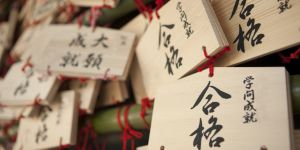
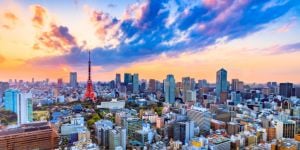


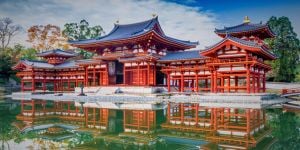
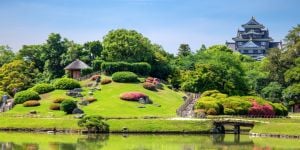
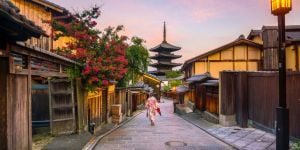





Comments
1